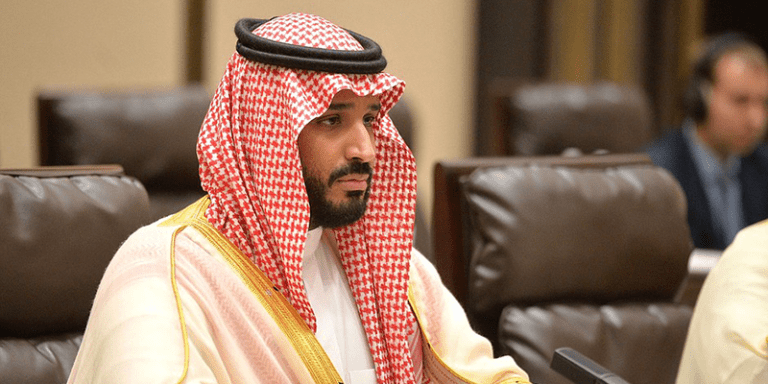
The Saudi reform project coincides with the appointment of Mohammed bin Salman bin Abdulaziz Al Saud as the new crown prince in June 2017. From the outset, many concerns and doubts have grown about the capability of the reform will to transcend the “past”—a past in which a long history of conceptions, legacies, and symbols is influenced by an established network of social, political, and economic interests.
The Saudi media has been able to cover up these challenges and their ramifications on the domestic situation. Nevertheless, the recent diplomatic crisis between Saudi Arabia and Canada, which culminated in recalling the Saudi ambassador from Ottawa and considering the Canadian ambassador unwelcome in Riyadh, brought the Saudi scene back to square one. Riyadh is in a difficult situation, especially after the series of arrests in May that targeted a group of female women’s rights activists.
The “exceptional” decisions, including allowing women to drive, the organization of mixed-gender concerts, and the propagation of an open-minded social/religious discourse could not withstand the heavyweight state that is consumed by an obsession with its security apparatus. This became evident specifically when the authorities executed a series of arrests against Saudi female women’s rights activists since mid-May. Among the detainees are Loujain Al Hathloul, ranked one of the most powerful Saudi women under the age of forty by Arabian Business magazine in 2015; Aziza al-Yousef, who led a campaign to abolish the male guardianship system and delivered a 14,700-signature petition to King Salman bin Abdulaziz; and Eman Al Nafjan, a lecturer of linguistics at Riyadh University who was chosen by Foreign Policy magazine among its list of 100 global thinkers for 2011. Lately, authorities have detained both activist Nassima al-Sadah and gender rights advocate Samar Badawi, the sister of the imprisoned blogger Raif Badawi.
It seems that the Saudi state, which was formed in 1932 by a coalition of organized Bedouin tribes unified under the religious banner of Wahhabism, is not ready to carry out a promising reform project or to create a new national identity, which primarily requires a new, efficacious social base. This missing social base cannot merely take the form of speeches given by the elite who reside not in Riyadh, but in Dubai and Abu Dhabi. Undoubtedly, it was surprising and shocking to several observers that the recent arrests in Saudi Arabia were extended to include female activists and advocates who were supposed to be playing a vital role in the reform project, if not the leading role.
The bet was placed on urban centers and the secular advocates of individual and societal liberties—who are positioned in the Saudi state’s mentality as an imminent threat and the symbol of moral and ethical corruption—to be the leading figures in the new Saudi state and the expected social pillar for the formation of the new identity. However, what has happened and is still happening is an assertion that change in Saudi Arabia remains a mere media propaganda ploy. Indeed, the Saudi state is still doubtful of the change and lacks trust in citizens who do not belong to the groups that enjoy a history of loyalty to the governing institution.
From the very beginning, Riyadh has intended the reform project to be selective and exclusive. The Saudi government perceived it as governed by a historical rule that any reforms, changes, or authorizations of additional individual or societal freedoms and liberties should always be given through royal decrees and decisions—and not in response to the demands of an autonomous civil society. Perhaps this accounts for Riyadh’s rage against the female activists who bypassed this rule and preferred to call for more freedoms and rights for Saudi women independently of state institutions, rather than in cooperation with them.
The Saudi reform project attracts a broad base of liberal and secular groups. In addition, the young crown prince tries hard to bring forward new faces to run his ambitious project in the country. Nonetheless, it is still a confused, uncertain endeavor, haunted by the calculations of the domestic front, the balance of powers and alliances, and the adherence to the principle that the ruling house is the beginning and end of the state. Coupled with these complexities are political conflicts in a region that is highly charged with unrest and sharp alignments. This confusion, which was extraneous during the early days of the brave reform project and the accelerated change, is currently—though not willfully—preoccupying the Saudi media. It has also become an example of the state’s foreign crises.
After all, Riyadh has to recognize clearly that social and political change and reform projects all have their inescapable cost, which it has to accept and be ready to pay. This cost includes the acceptance that Saudi citizens have their own conceptions, opinions, convictions, and orientations which do not have to comply or be identical with the official viewpoint. For the people, the risk of accepting “half a reform” is no less than the risk of proceeding with “half a revolution.”
An earlier version of this article was first published by Gulf House on August 23, 2018. It can be accessed at https://gulfhouse.org/posts/3138/
